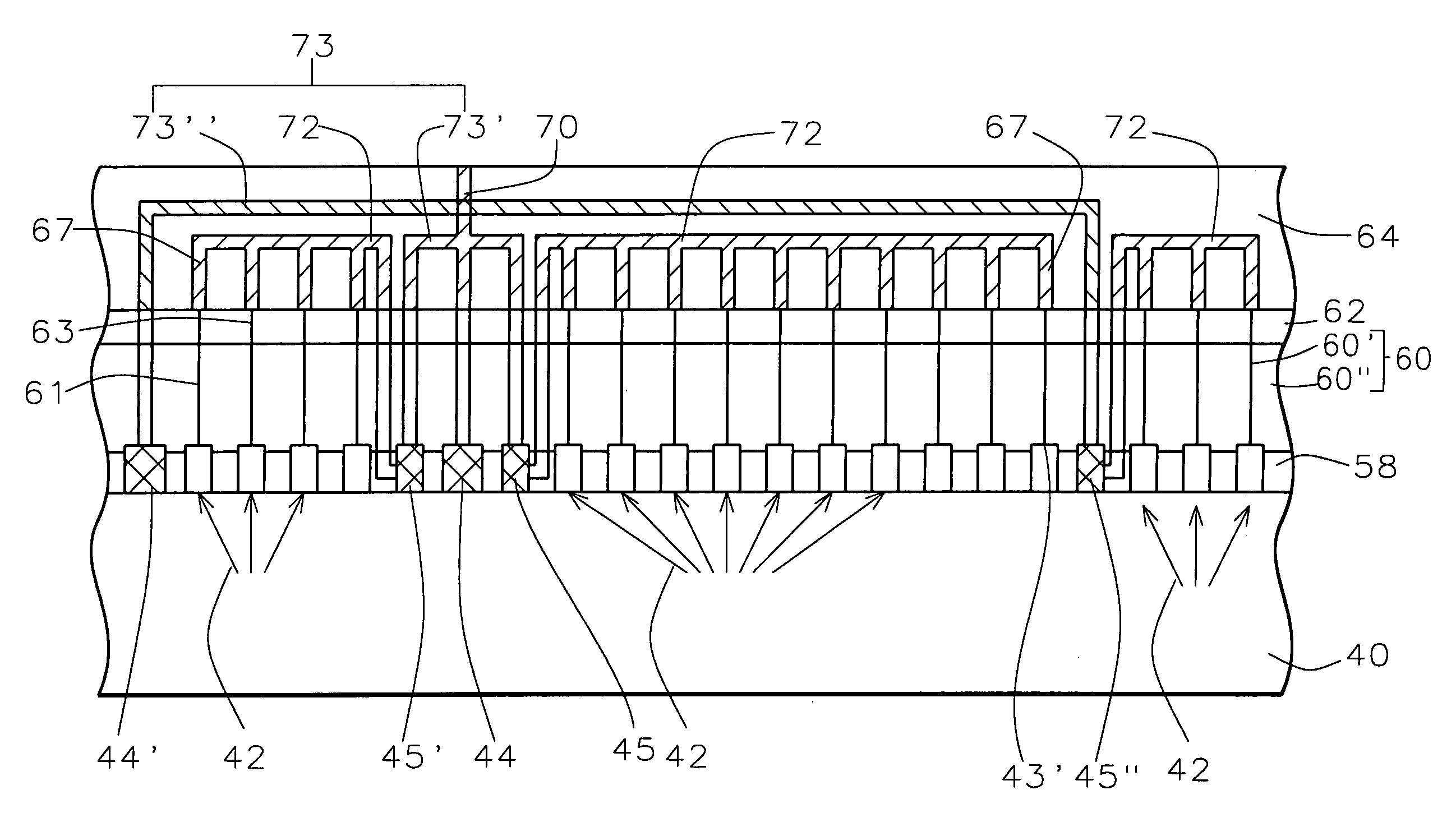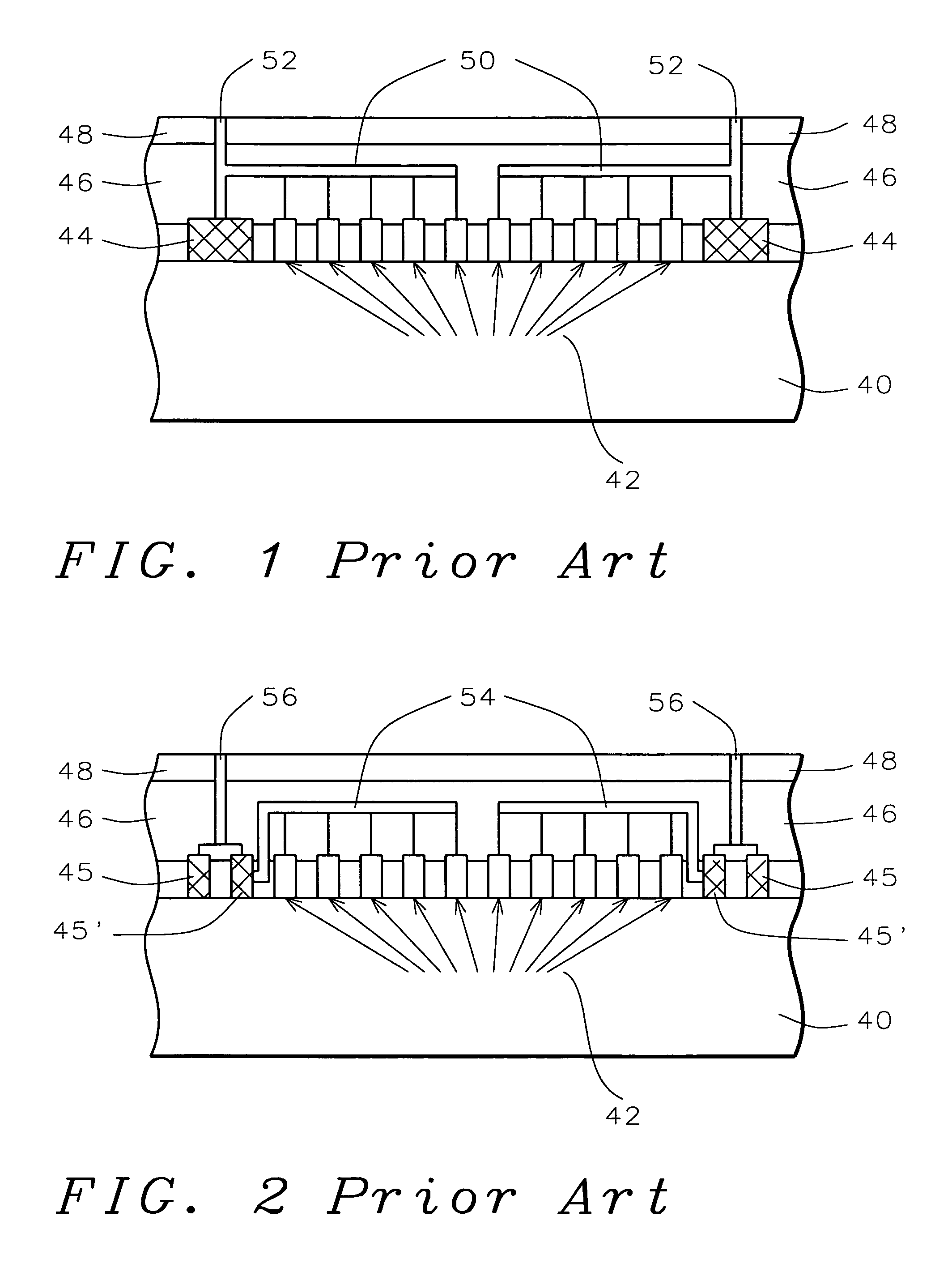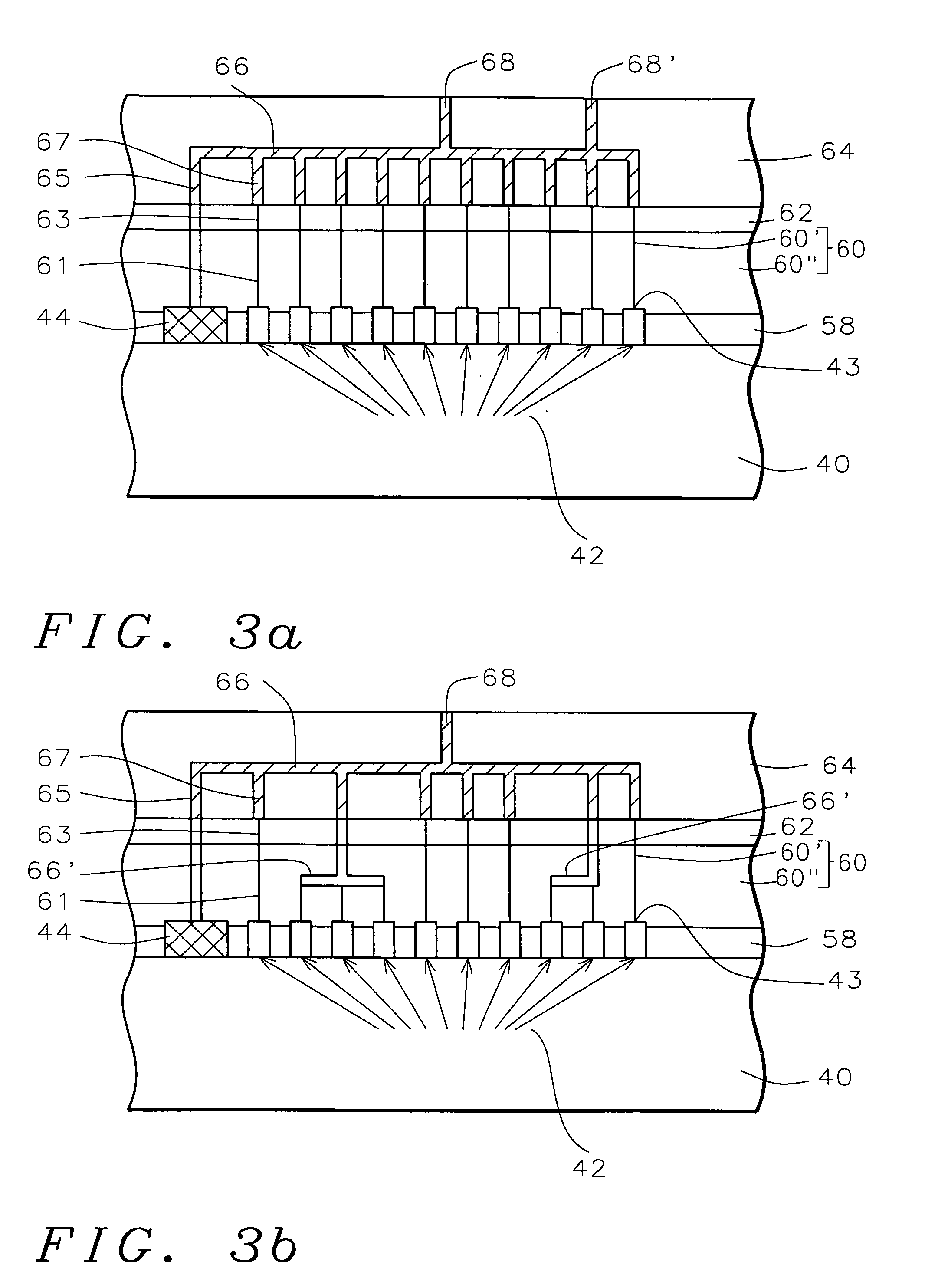Post passivation interconnection schemes on top of the IC chips
a technology of interconnection schemes and ic chips, applied in the field of postpassivation processing, can solve the problems of significant ir drop and power/ground noise, waste of expensive metal, and contaminated metal removal, and achieve the effect of high interconnection line resistan
- Summary
- Abstract
- Description
- Claims
- Application Information
AI Technical Summary
Benefits of technology
Problems solved by technology
Method used
Image
Examples
Embodiment Construction
[0059]U.S. Pat. No. 6,383,916, to a common inventor as the current invention, teaches an Integrated Circuit structure where re-distribution and interconnect metal layers are created in layers of dielectric over the passivation layer of a conventional Integrated Circuit (IC). A layer of passivation is deposited over the IC, a thick layer of polymer is alternately deposited over the surface of the layer of passivation, and thick, wide metal lines are formed over the passivation.
[0060]Referring now more specifically to FIG. 6a, there is shown a cross section of one implementation of U.S. Pat. No. 6,383,916. The surface of silicon substrate 10 has been provided with transistors 11 and other devices (not shown in FIG. 6a). The surface of substrate 10 is covered by an interlevel dielectric (ILD) layer 12, formed over the devices.
[0061]Layers 14 (two examples are shown) represent all of the metal layers and dielectric layers that are typically created on the dielectric layer 12. Layers 14 ...
PUM
 Login to View More
Login to View More Abstract
Description
Claims
Application Information
 Login to View More
Login to View More - R&D
- Intellectual Property
- Life Sciences
- Materials
- Tech Scout
- Unparalleled Data Quality
- Higher Quality Content
- 60% Fewer Hallucinations
Browse by: Latest US Patents, China's latest patents, Technical Efficacy Thesaurus, Application Domain, Technology Topic, Popular Technical Reports.
© 2025 PatSnap. All rights reserved.Legal|Privacy policy|Modern Slavery Act Transparency Statement|Sitemap|About US| Contact US: help@patsnap.com



